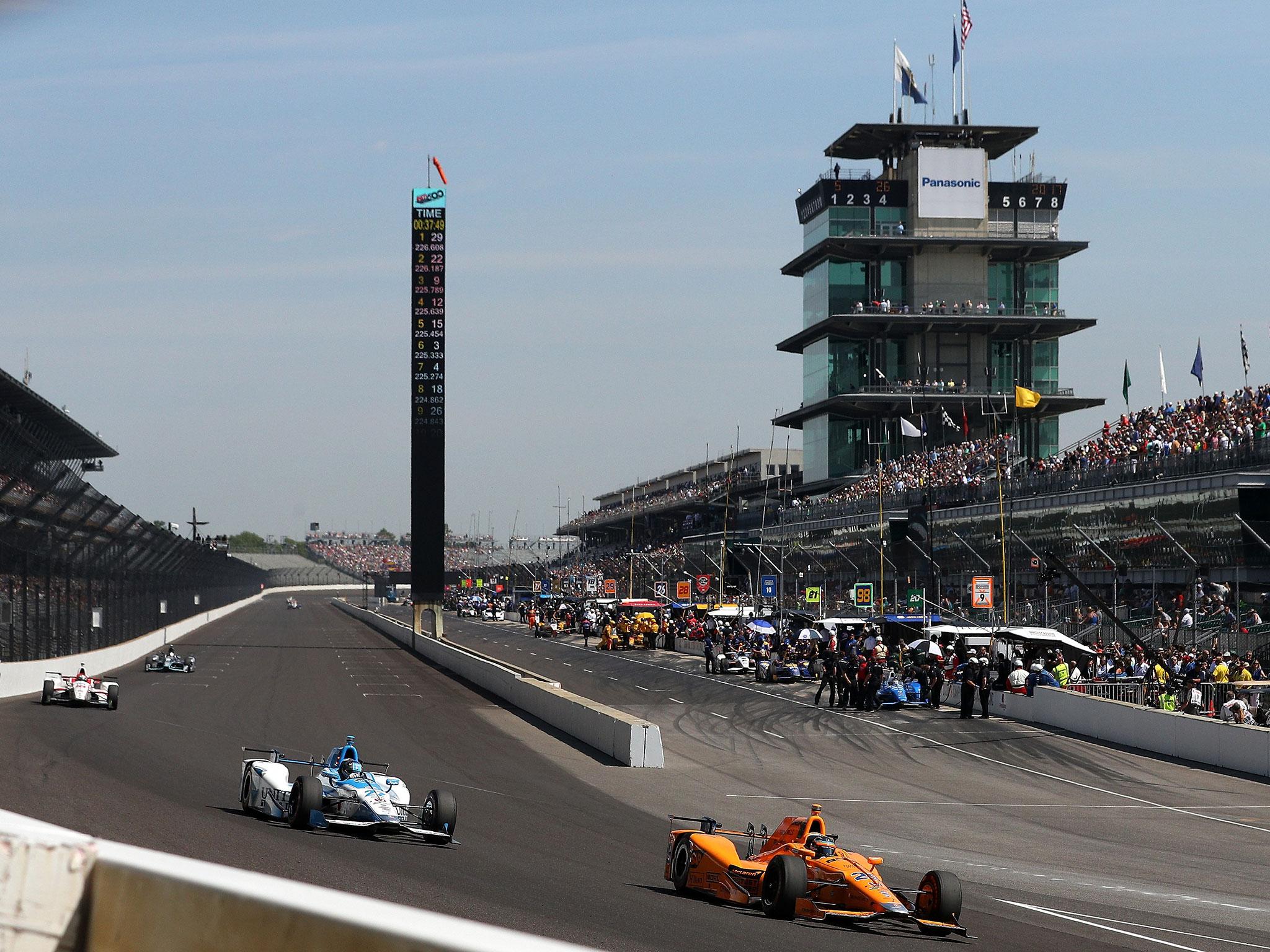Weather Conditions and Impact on Race: Indianapolis 500 Rain Delay

Indianapolis 500 rain delay – The Indianapolis 500 is an annual open-wheel car race held at Indianapolis Motor Speedway in the state of Indiana, United States. It is considered one of the most prestigious and well-known races in the world.
The race is held on Memorial Day weekend, which typically falls in late May. The weather during this time of year in Indiana is variable, with a mix of sunshine, rain, and thunderstorms. The average temperature during the race is around 75 degrees Fahrenheit (24 degrees Celsius), with humidity levels around 70%. Rain is a common occurrence during the race, with an average of about 1 inch (2.5 centimeters) of rain falling on race day. The rain can affect the race in a number of ways, including:
Safety Concerns
Rain can make the track slippery, which can lead to accidents. In addition, rain can reduce visibility, which can make it difficult for drivers to see other cars and track conditions. The rain can also make it difficult for the drivers to stay hydrated, which can lead to fatigue and heat-related illnesses.
Schedule Disruptions, Indianapolis 500 rain delay
Rain can also lead to schedule disruptions. If the rain is heavy enough, it can force the race to be delayed or even canceled. In 1973, the race was delayed for three hours due to rain. In 1997, the race was canceled due to rain for the first time since 1946.
Historical Examples
There have been a number of notable rain delays or cancellations in the history of the Indianapolis 500. In 1973, the race was delayed for three hours due to rain. In 1997, the race was canceled due to rain for the first time since 1946. In 2004, the race was delayed for two hours due to rain. In 2007, the race was delayed for one hour due to rain.
The rain delay at the Indianapolis 500 has caused a lot of speculation about who’s winning the race. Check out the latest updates to see who’s in the lead and who’s struggling. The rain delay has made the track slick and treacherous, so it’s anyone’s guess who will come out on top.
Contingency Plans and Race Management

To ensure the safety of drivers, teams, and spectators, the Indianapolis 500 has a comprehensive set of contingency plans in place for rain delays. These plans Artikel the procedures to be followed in the event of rain, including when to delay or cancel the race and how to communicate these decisions.
Race officials monitor weather conditions closely and make decisions based on the severity of the rain and the potential impact on the race. If rain is expected to be light and short-lived, the race may be delayed for a short period of time. However, if the rain is expected to be heavy or prolonged, the race may be canceled or postponed to a later date.
Communication Strategies
Race officials use a variety of communication strategies to inform drivers, teams, and spectators about weather-related decisions. These strategies include:
- Public address announcements
- Social media updates
- Email and text message alerts
- Official race website and mobile app
By using these communication channels, race officials can quickly and effectively disseminate information about weather-related delays or cancellations, ensuring that everyone involved is aware of the latest developments.
Impact on Drivers and Teams

Rain delays at the Indianapolis 500 can have a significant impact on drivers and teams. Drivers must contend with wet and slippery conditions, which can make it difficult to control their cars and increase the risk of accidents. Teams must also be prepared to make quick adjustments to their cars and strategies to account for the changing weather conditions.
There are several challenges that drivers face during rain delays. First, the wet track surface reduces the amount of grip that the tires have, making it more difficult to accelerate, brake, and turn. This can lead to drivers losing control of their cars and crashing. Second, the rain can make it difficult for drivers to see, which can increase the risk of accidents. Third, the rain can also make it difficult for drivers to stay hydrated, which can lead to fatigue and decreased performance.
Teams must also be prepared to make quick adjustments to their cars and strategies to account for the changing weather conditions. For example, teams may need to change the tires on their cars to rain tires, which are designed to provide more grip in wet conditions. Teams may also need to adjust the suspension and aerodynamic settings on their cars to account for the wet track surface.
Rain delays can have a significant impact on the outcome of the Indianapolis 500. In some cases, rain delays have led to the race being shortened or even canceled. In other cases, rain delays have given some drivers an advantage over others. For example, in the 2008 Indianapolis 500, rain delays gave Scott Dixon an opportunity to change his tires and make other adjustments to his car, which helped him to win the race.
Strategies for Rain Delays
Teams employ a variety of strategies to prepare for and respond to rain delays. Some of the most common strategies include:
- Having a backup car ready in case the primary car is damaged in a rain-related accident.
- Practicing driving in wet conditions so that drivers are prepared for the challenges of racing in the rain.
- Having a plan in place for making quick adjustments to the car in the event of a rain delay.